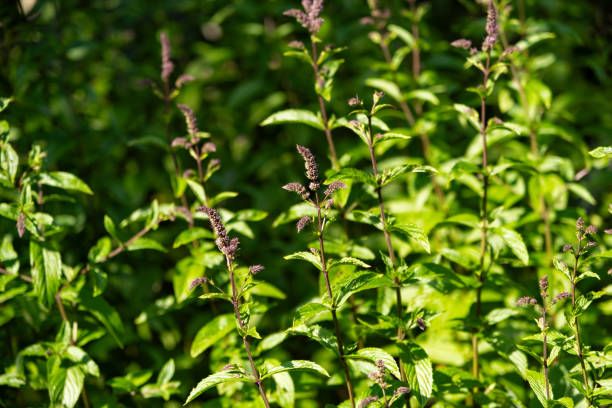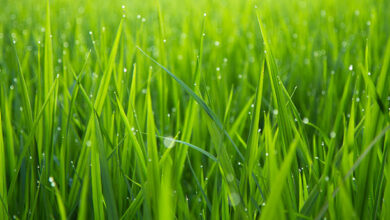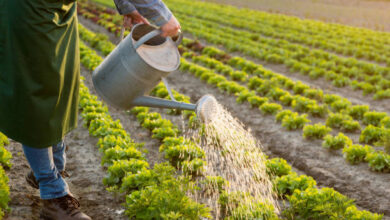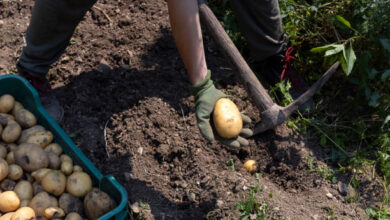Peppermint Seeds: A Comprehensive Guide

Peppermint Seeds: A Comprehensive Guide
Peppermint is a versatile herb prized for its refreshing flavor and aromatic qualities. Growing peppermint from seeds offers an exciting and rewarding way to enjoy this herb right from your garden or home. This comprehensive guide will cover everything you need to know about planting and caring for peppermint seeds, ensuring you cultivate a thriving peppermint plant.
What Are Peppermint Seeds and Why Grow Them?
Characteristics of Peppermint Seeds: Peppermint seeds are small, typically brown, and have a relatively high germination rate. They are known for their ability to produce robust plants with aromatic leaves. Understanding the characteristics of peppermint seeds can help you provide the best conditions for successful growth.
Benefits of Growing from Seeds: Starting peppermint from seeds allows you to select from a wide variety of peppermint types and cultivars. Growing from seeds is often more cost-effective than purchasing seedlings and provides a sense of accomplishment as you nurture your plants from their very beginning.
Peppermint Varieties: There are several varieties of peppermint available from seeds, each with unique flavor profiles and growth habits. Some popular varieties include ‘Mentha × piperita’ and ‘Mentha × piperita f. citrata.’ Each type offers distinct flavors and uses, making it easy to choose one that fits your needs.
How to Plant Peppermint Seeds for Successful Growth
Best Time to Plant: The ideal time to plant peppermint seeds is early spring after the last frost, or indoors a few weeks before the last frost date. In milder climates with extended growing seasons, you can also sow seeds in late summer or early fall.
Soil Preparation: Peppermint thrives in well-drained soil with a slightly acidic to neutral pH (6.0 to 7.0). To prepare the soil, mix organic matter such as compost or peat moss to improve drainage and soil structure. If planting in containers, use a high-quality potting mix designed for herbs.
Planting Instructions: Sow peppermint seeds on the surface of the soil and lightly press them in, as they need light to germinate. Space seeds about 1 inch apart and water gently. Keep the soil consistently moist but not waterlogged. Germination typically occurs within 10 to 15 days.
Container vs. Garden Planting: Peppermint can be successfully grown in containers or garden beds. Containers are ideal for small spaces or indoor gardening. Ensure the container has drainage holes and is large enough to accommodate the plant’s growth. For garden beds, choose a spot with full sun to partial shade.
Essential Care Tips for Healthy Peppermint Growth
Watering Requirements: Peppermint plants require regular watering to stay healthy. Water deeply once a week, allowing the top inch of soil to dry out between watering. While peppermint prefers consistently moist soil, it can tolerate brief periods of dryness.
Fertilization: Feed peppermint plants with a balanced, all-purpose fertilizer once in early spring and again in mid-summer. This supports robust growth and vibrant foliage. Avoid over-fertilizing, as excessive nutrients can lead to lush foliage but reduced flavor.
Light and Temperature: Peppermint thrives in full sun to partial shade. In hot climates, provide some afternoon shade to prevent leaf scorch. Indoor peppermint plants should receive bright, indirect light. If natural light is insufficient, consider using grow lights to supplement.
Pruning and Harvesting: Regular pruning helps maintain a bushy, compact plant and encourages new growth. Harvest peppermint leaves when they are young and tender for the best flavor. Trim back the plant periodically to prevent legginess and to promote healthy foliage.
YOU MAY LOVE TO READ
Mint Seeds: Everything You Have To Know
Organic Sweet Potatoes: All You Need To Know
How to Grow and Utilize Winter Rye Seed: A Complete Guide
Troubleshooting Peppermint Plant Problems
Pests and Diseases: Peppermint is relatively pest-resistant but can occasionally attract aphids, spider mites, or whiteflies. Monitor plants regularly and use insecticidal soap or neem oil if needed. Common diseases include mint rust and mildew, which can be managed by ensuring good air circulation and avoiding overhead watering.
Growth Challenges: If peppermint plants appear leggy or have poor leaf production, it may be due to insufficient light or overwatering. Adjust light exposure and ensure proper drainage to resolve these issues.
Environmental Factors: Peppermint can be sensitive to extreme temperatures and poor soil conditions. Protect plants from frost and heat stress, and amend the soil as needed to ensure optimal growth conditions.
Why You Should Grow Peppermint in Your Garden
Culinary Uses: Fresh peppermint is a fantastic addition to a wide range of dishes and beverages. Use it in salads, sauces, teas, and cocktails to add a refreshing twist to your recipes. Peppermint’s versatility makes it a valuable herb in your kitchen.
Health Benefits: Peppermint is renowned for its digestive and respiratory health benefits. It can aid in digestion, relieve symptoms of indigestion, and help with respiratory issues such as congestion and coughing.
Aesthetic Value: Peppermint plants enhance garden aesthetics with their lush, green foliage and pleasant aroma. They add a touch of greenery and sensory appeal to any garden or home setting.
Conclusion
Growing peppermint from seeds is a rewarding endeavor that offers numerous benefits, from fresh culinary uses to enhancing your garden’s beauty. Start your peppermint-growing journey today by purchasing seeds and following these tips to enjoy a thriving peppermint plant in your home or garden.




